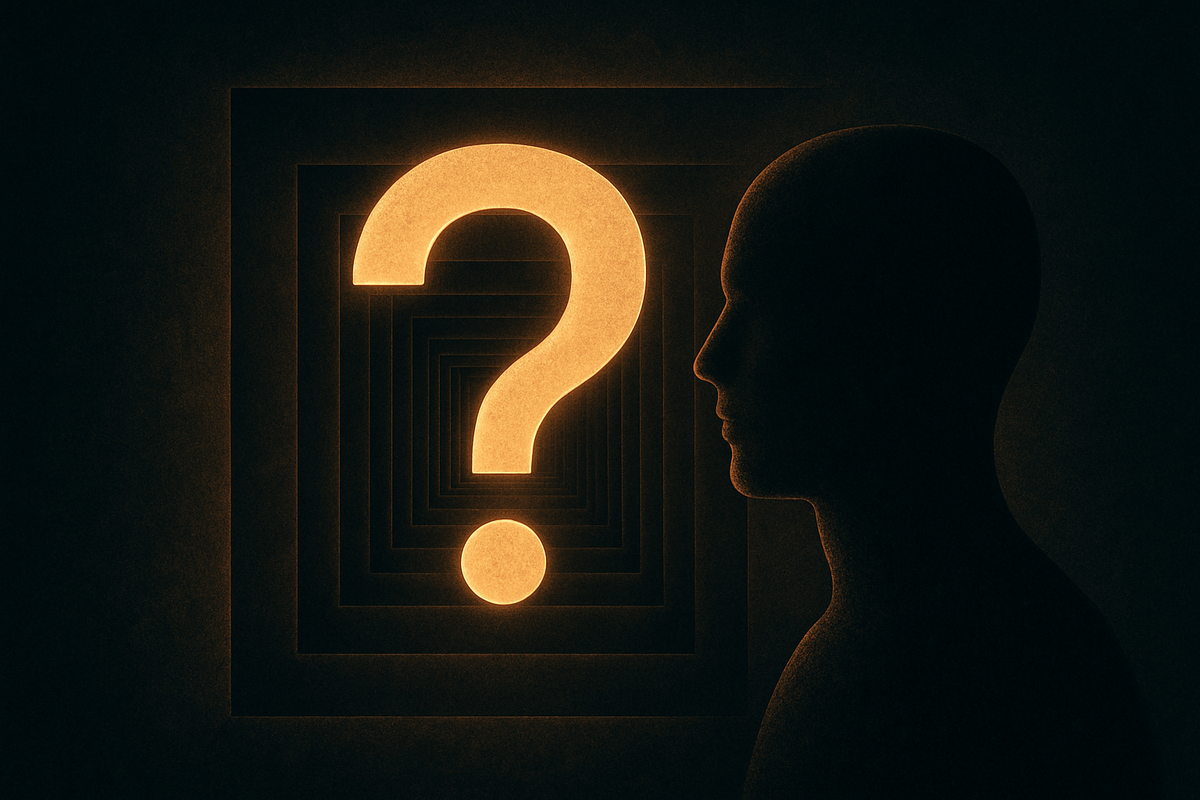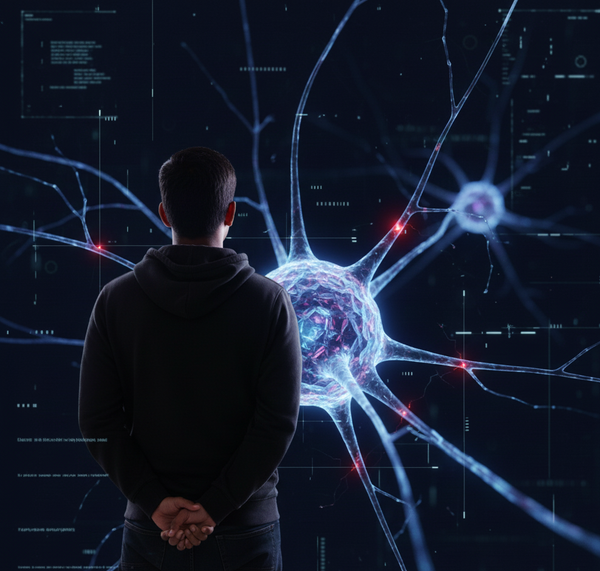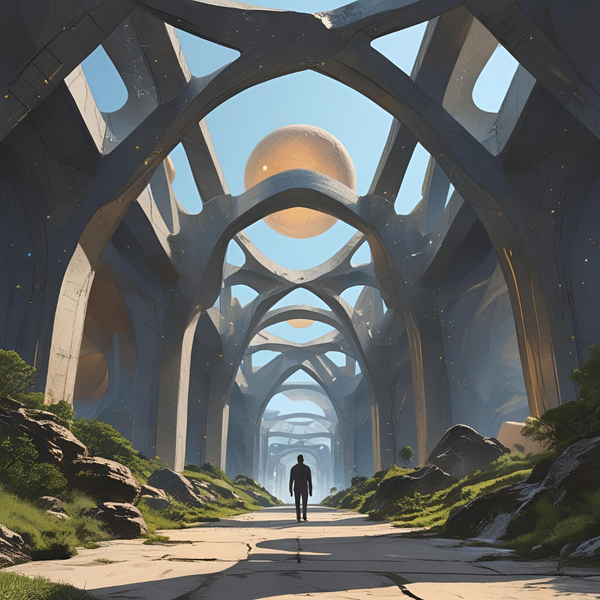How Asking the Wrong Question Creates Mysteries That Don't Exist

What if I told you that the deepest mysteries plaguing human knowledge—consciousness emerging from matter, the mind-body problem, infinite regress, self-reference paradoxes—aren't profound features of reality waiting to be solved, but artifacts of a particular way of asking questions?
Every academic discipline, from quantum physics to cognitive science, has become trapped in the same pattern. We start with concepts and objects as building blocks, establish rules for manipulating them, then try to explain some concepts using others. Physicists explain particles with other particles or fields, neuroscientists explain behavior with neurons, philosophers try to explain consciousness with... more concepts.
This approach has revolutionized our world. We've mapped galaxies, decoded DNA, built technologies that would have seemed like magic to our ancestors. But hidden within this success lies an extraordinary oversight: sometimes we ask the wrong question from the very beginning, and that wrong question generates an entire universe of pseudo-problems.
The Question That Creates Mysteries
Here's the question that started it all: "How can we explain X using Y?"
How can we explain consciousness using neurons? How can we explain life using chemistry? How can we explain meaning using syntax? This seems like the most natural question in the world. It's what we call "doing science."
But watch what happens when we follow this approach to its logical conclusion. The moment we establish concepts as separate building blocks, we immediately create gaps that "need" to be bridged:
- If mind and body are separate, how do they interact?
- If consciousness is different from neurons, how does it emerge from them?
- If we're studying knowledge with knowledge, how do we avoid circular reasoning?
- If we explain everything in terms of parts, how do wholes come into being?
These aren't discoveries about the nature of reality—they're inevitable consequences of the question we started with. We feel the separation, then spent centuries trying to put back together what we feel is apart.
The Academic Mystery Factory
Once you see this pattern, it becomes almost comical how systematically we manufacture our own puzzles:
The Emergence Mystery: We divide reality into levels—particles, atoms, molecules, cells, organisms—then act surprised that "wholes" seem to have properties their "parts" don't have. But emergence is only mysterious if you start with the divisions to begin with.
The Hard Problem of Consciousness: We feel consciousness as subjective experience, we feel physical processes as objective mechanisms and then wonder how one could possibly give rise to the other.
The Mind-Body Problem: We feel mental and physical phenomena as separated define them into distinct categories, then spend centuries trying to figure out how they could possibly interact. But what if the separation exists only in our conceptual framework?
Self-Reference Paradoxes: We treat knowledge as an object that can study other objects, then act puzzled when knowledge tries to study itself. But knowledge isn't an object—it's an activity. Activities don't study themselves; they simply occur.
Infinite Regress: We demand that every explanation be grounded in something more fundamental, then wonder why we never reach bottom.
Each mystery follows the same pattern: create conceptual divisions based on our feelings, then struggle to bridge the gaps we've created.
The Question That Dissolves Everything
But what if we asked a completely different question? Instead of "How can we explain X using Y?" what if we asked: "What makes it possible to have concepts X and Y in the first place?"
This isn't just another explanation using different concepts. This is pointing toward something more fundamental than any concept—the capacity from which all concepts arise.
Think about it: before you can explain consciousness with neurons, you need the capacity to form the concepts "consciousness" and "neurons." Before you can study the mind-body relationship, you need the capacity to distinguish "mind" from "body." Before you can worry about emergence, you need the capacity to recognize both "wholes" and "parts."
What is this capacity? Where does it come from? How does it operate?
The moment you turn attention toward this primordial capacity—not as another object to be explained, but as the source of your ability to explain anything—something extraordinary happens. All the academic mysteries simply... evaporate.
The Great Dissolution
Emergence stops being a problem because you're no longer trying to build wholes from parts. You recognize the primordial as the source of whole and parts. In this context emergence does not apply.
The hard problem of consciousness disappears because you're not trying to generate awareness from non-awareness. Both awareness and non-awarness arise from the primordial capacity.
Mind-body problems dissolve because you're no longer creating artificial separations. Mental and physical are simply different aspects of the same knowing activity.
Self-reference paradoxes vanish because there's no separate self studying separate objects.
Infinite regress ends because you've found actual ground—not another concept needing explanation, but the living source of all conceptualization.
The problems don't get solved—they get revealed as non-problems created by the wrong approach.
The Plot Twist
Here's the beautiful irony: the capacity we're pointing toward isn't exotic or hidden. It's the most obvious thing in the world. It's operating right now as you read these words. It's what makes it possible for you to understand concepts, recognize patterns, make distinctions, have insights, create concepts. Even the concept of "I".
The greatest mystery isn't how consciousness emerges from matter, or how subjective experience relates to objective reality, or how knowledge can study itself. The greatest mystery is how something so obvious, so present, so immediately available could remain hidden for so long—and how it can be recovered so simply by asking the right question. Or better, how can mysteries and paradoxes arise when asking the wrong question?
The Freedom of Right Questions
Once you see how the wrong question creates problems that don't exist, you're free. Free from the burden of solving unsolvable mysteries. Free from the trap of endless explanations that explain nothing. Free to recognize that the academic enterprise, for all its magnificent achievements, has been inadvertently creating the very problems it tries to solve.
This doesn't diminish the value of science, mathematics, or philosophy. It reveals their true nature: they're not discovering objective features of an external reality—they're creative expressions of the primordial capacity for knowledge. Physicists don't describe particles as they are; they create useful models. Mathematicians don't discover eternal truths; they develop powerful tools. Philosophers don't solve consciousness; they feel consciousness.
The question that dissolves all the others isn't "How does X emerge from Y?" but "What is the source from which both X and Y, and the capacity to distinguish them, arise?"
Ask this question with genuine curiosity, and watch centuries of academic confusion dissolve like morning mist when the sun rises.
The problems were never real. We just forgot the right question to ask.




